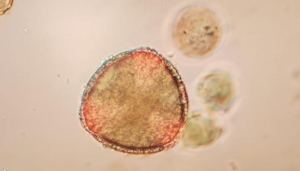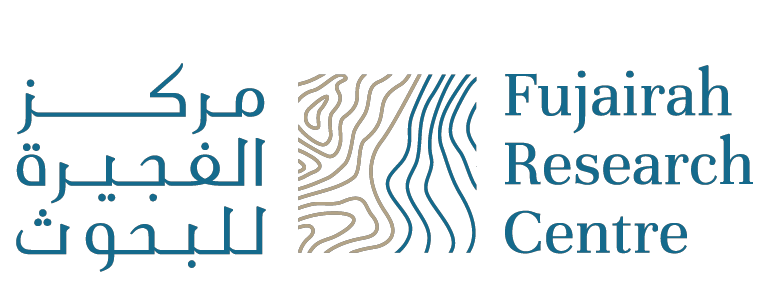
Pollen Identification in Honey
Honey, that golden elixir produced by honeybees, is not merely a sweet delight; it is a complex
mixture of sugars, enzymes, and botanical compounds derived from the nectar of various
flowering plants. The identification of pollen in honey is a scientific endeavor that unveils the
intricate botanical tapestry hidden within this natural sweetener. This process is crucial for
understanding the geographical origin, authenticity, and quality of honey. In this exploration, we
delve into the methodologies, significance, and emerging trends in pollen identification in honey.
At the heart of honey production lies the intricate dance of pollination. Bees, nature's tireless
pollinators, traverse landscapes in search of nectar and pollen from flowering plants. As they
collect nectar, tiny pollen grains adhere to their bodies. Once back at the hive, these pollen-laden
bees contribute to the formation of honey. The pollen trapped within the honey becomes a
botanical signature, a key to unlocking the floral sources that have contributed to the honey's
creation.
The cornerstone of pollen identification in honey lies in the realm of microscopy. Microscopic
analysis is a well-established method employed by scientists and beekeepers alike to scrutinize the
pollen content within honey. This process typically involves the preparation of honey samples,
often diluted with water, which are then placed under a microscope for examination.
Under the lens, the world of pollen unfolds. Each grain, with its unique size, shape, and surface
features, holds clues to its botanical origin. Light microscopy is a commonly used tool for this
purpose, allowing scientists to distinguish and identify different pollen types based on
morphological characteristics. The use of stains can enhance contrast, aiding in the visualization
of intricate details.
Here's a general overview of the process;
Steps for Pollen Identification in Honey:
1. Sample Collection: Collect honey samples from different hives or locations.
2. Preparation of Slides: Small amount of Honey is mixed with warm water. The mixture is
allowed to settle and them take a small drop on slide for the microscopic analysis.
3. Microscopic Analysis: Place drop of the honey – water mixture on slide and cover the drop
with cover slip, followed by examination under microscope.
4. Pollen Identification: Identify & count different types of pollen in honey. Morphological
Characteristics such as size, shape & surface features are used for identification based on
reference collection of pollens which is used for comparison.
5. Documentation: Types & quantities of pollen found in the honey are documented &
pollen profile for each honey sample is created.
6. Comparison: The identified pollen is compared with known pollen types from local plants,
which shall help to determine the floral sources contributing to the honey.
Accurate pollen identification requires a comprehensive reference collection. This collection
serves as a library of known pollen types, allowing scientists to compare and match observedpollen grains in honey samples. Building and maintaining such reference collections is a meticulous
process that involves careful documentation of each pollen type's characteristics.
Pollen identification in honey goes beyond a mere scientific curiosity. It holds profound
implications for understanding biodiversity and the geographical origin of honey. Different regions
boast unique plant species, and the pollen profile of honey can serve as a botanical fingerprint,
linking the sweet substance to the specific flora of a particular locale. This information is invaluable
for beekeepers, consumers, and regulatory bodies alike.
In regions characterized by rich floral diversity, the honey produced reflects a mosaic of pollens,
each contributing to the overall flavor and aroma. Through meticulous identification, scientists can
unravel the intricate blend of botanical elements, providing insights into the ecological tapestry of
a given area.
The reliability of pollen identification in honey is contingent upon stringent quality control
measures. Laboratories and beekeepers must adhere to standardized protocols to ensure the
accuracy of results. Quality control involves not only the precision of microscopic analysis but also
the integrity of the honey samples themselves. Contamination or adulteration can compromise
the authenticity of the pollen profile.
Furthermore, periodic calibration of microscopes, proficiency testing for analysts, and the use of
blind samples contribute to the robustness of the identification process. As the demand for highquality honey grows, the implementation of rigorous quality control measures becomes
paramount in maintaining the integrity of pollen analysis.
While light microscopy remains a stalwart in pollen identification, advancements in technology
have ushered in new possibilities. Scanning electron microscopy (SEM) provides higher resolution
images, offering a more detailed view of pollen morphology. This technique, though less
commonly used due to its cost and technical requirements, can be a valuable tool for precise
identification, especially in research settings.
In addition to microscopy, molecular techniques have gained prominence. DNA analysis allows for
a more direct and accurate identification of plant species contributing to honey. Polymerase chain
reaction (PCR) and DNA barcoding techniques can be applied to honey samples, enabling the
identification of even trace amounts of pollen.
Certain regions are renowned for producing distinctive honey varieties, celebrated for their unique
flavors and characteristics. Geographical indication (GI) is a certification that links the quality and
reputation of a product to its geographical origin. Pollen identification contributes significantly to
the establishment and maintenance of GIs for honey.
Through precise identification of the floral sources, authorities can verify the claims of origin made
by beekeepers and producers. This not only protects the integrity of local honey industries but also
allows consumers to make informed choices based on the specific qualities associated with honey
from different regions.Consumers, armed with knowledge about the floral composition of honey, can make informed
choices based on their preferences. Some may seek out honey varieties with specific health
benefits associated with certain plant pollens, while others may simply appreciate the distinct
flavors imparted by floral sources.
Pollen identification in honey is a captivating journey into the heart of nature's collaboration
between plants and bees. Beyond its scientific intricacies, it holds the promise of unlocking the
terroir of honey, connecting consumers with the diverse landscapes from which this golden elixir
emerges. As technology continues to advance, and awareness of the importance of honey
authenticity grows, the art and science of pollen identification will undoubtedly play a pivotal role
in shaping the future of apiculture, environmental conservation, and the appreciation of one of
nature's sweetest gifts.
